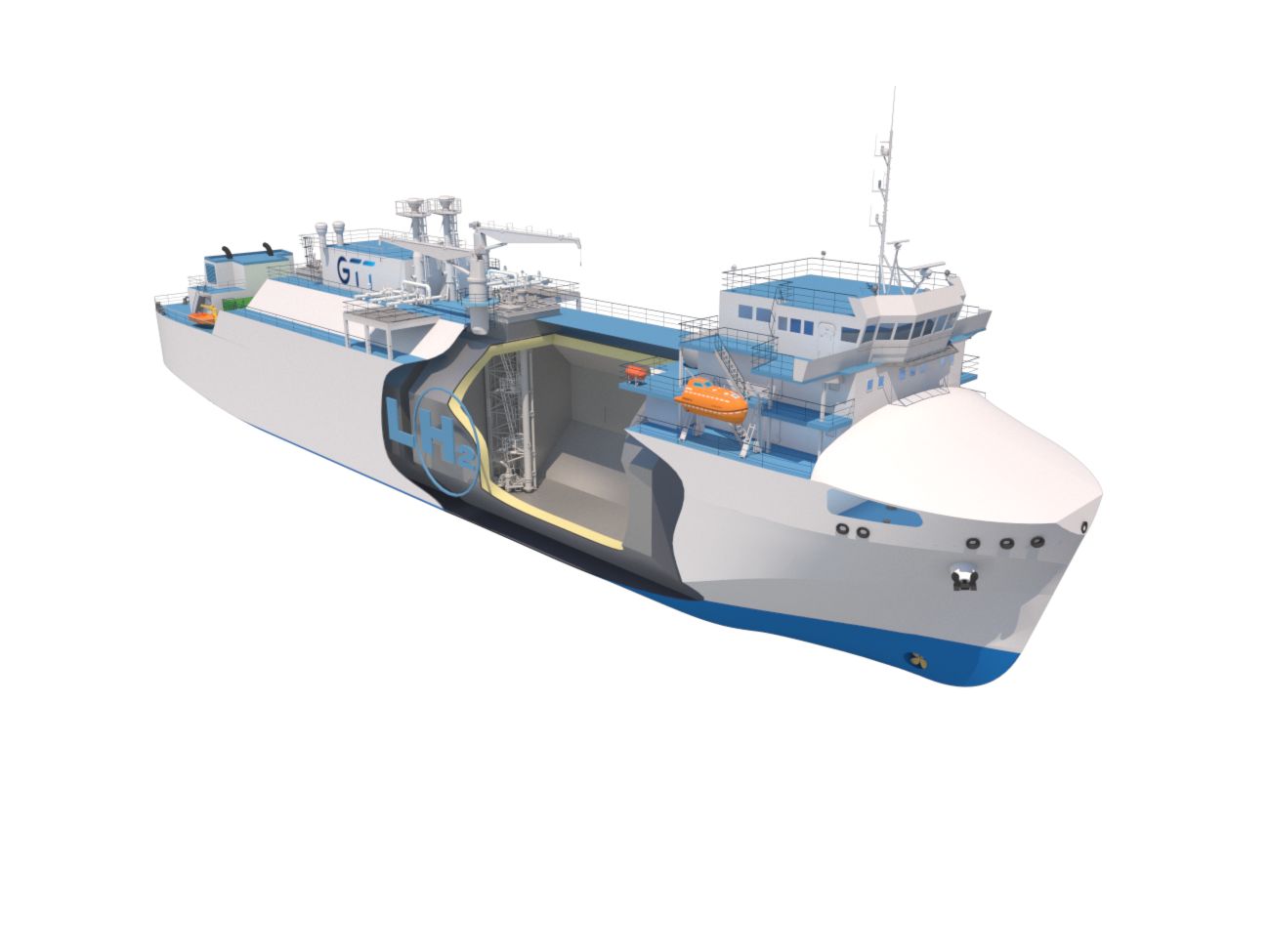French LNG containment giant GTT has secured an approval in principle from Japan’s classification society ClassNK for a new liquefied hydrogen (LH2) containment system concept.
GTT said in a statement it has developed a scalable membrane type containment system, as well as the cargo handling system.
The Paris-based firm can adapt this containment system to any size of an LH2 carrier without major design modifications.
GTT said the ability to transport hydrogen in liquefied form at -253°C is one of the technological challenges to build a reliable, efficient, and competitive hydrogen supply chain.
ClassNK has issued the AiP for the LH2 cargo containment system and the cargo handling system following a review in accordance with its rules and guidelines dedicated to LH2 transportation as well as verification of the risk analysis’ results.
Philippe Berterottière, chairman and CEO of GTT, said the development of LH2 containment systems is a “key element” in accelerating the energy transition.
“GTT’s R&D teams are determined to push back the technological frontiers so that this solution is viable and rapidly available to the maritime transport and energy players,” Berterottière said.
Working with Shell, TotalEnergies
Last year, GTT won approvals from DNV for a containment system and an LH2 carrier, as part of its cooperation with Shell.
Shell is looking to develop a hydrogen energy supply chain by creating scalable and safe LH2 shipping technologies.
Earlier this year, GTT also teamed up with TotalEnergies, LMG Marin, and Bureau Veritas to develop a 150,000-cbm LH2 carrier concept.
Under the project, TotalEnergies will work on defining the vessel’s specifications including operational profile, while GTT will design the membrane containment system.
Moreover, designer LMG Marin will define the concept design of the LH2 carrier adapted to TotalEnergies’ specifications, while classification society BV will conduct a risk assessment and review the design.

